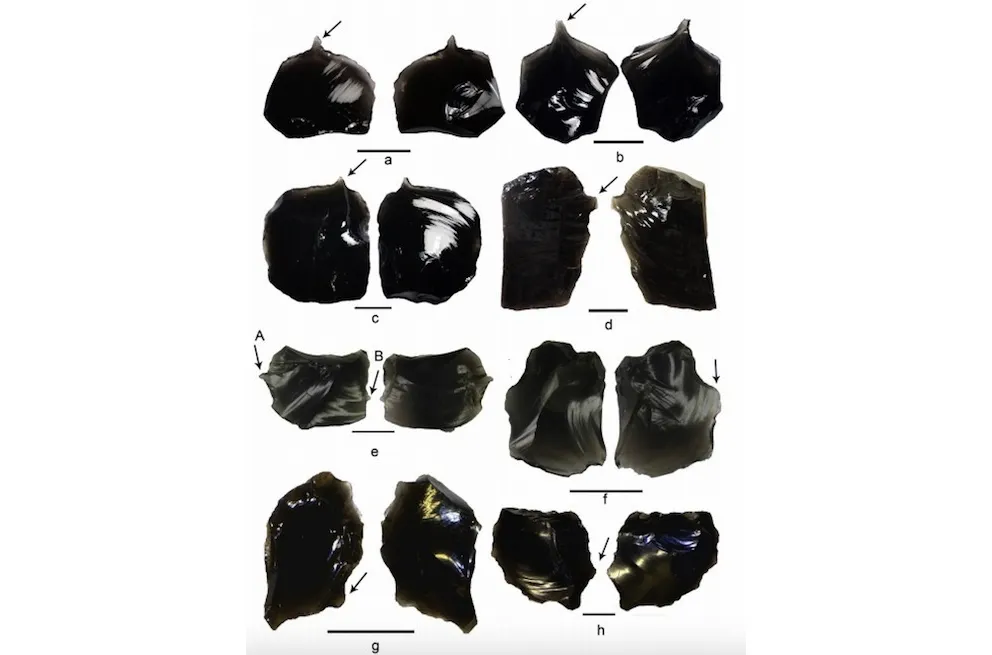Did Ancient Pacific Islanders Use Obsidian to Make Their Tattoos?
A team of Australian researchers think they may have found tools used to ink the ancients
/https://tf-cmsv2-smithsonianmag-media.s3.amazonaws.com/filer/db/f5/dbf5ee72-11fc-4262-9e84-69994a0794dc/tattoo.jpg)
The problem with studying ancient tattoos is that human skin just doesn’t last through the ages. The few examples we have all come from mummified remains: the Siberian Ice Princess Ukok has almost a full inked sleeve and Otzi the Iceman has 61 tattoos all over his body.
So tattoo researchers have begun to look for the tools used to ink the ancients. Though many early tattooing devices were likely made of biodegradable materials, a team of Australian researchers think they may have found inking tools made from the black volcanic glass obsidian.
“Tattooing is a very important cultural practice in the Pacific even today,” study co-author Robin Torrence of the Australian Museum in Sydney tells Charles Q. Choi at Live Science. “In fact, the English word 'tattoo' comes from a Pacific Polynesian word: tatau.” Tattoos were linked to the gods and mythology stories and represented social status, military strength and tribe or clan along with many other ritual functions.
The researchers analyzed 15 obsidian artifacts from a site in the Solomon Islands called Nanggu. The sharp, 3,000-year-old tools were originally believed to be used to scrape and tan hides. But Torrence and her team realized that the Solomon Islands don't have any large animals that would require this type of work. Instead, they wondered if the obsidian might have been used to make early tattoos.
To test that hypothesis, the researchers fashioned similar tools from local obsidian and used them to make 26 tattoos on pigskin with pigment red ochre, which comes from clay and charcoal—traces of which had been found on the Nanggu artifacts. They then compared the modern tools with the artifacts under the microscope, which revealed similar chipping, rounding and scratches on both sets of tools. They concluded in a paper recently published in the Journal of Archaeological Science: Reports that the tools were likely used for tattooing.

But not everyone is completely convinced. Lars Krutak, a tattoo anthropologist and research associate in the Department of Anthropology at the Smithsonian’s National Museum of Natural History tells Smithsonian.com that the obsidian could have been used to score bone tools or ritual implements painted with ochre. There is also no documentation of red ochre being used as tattoo pigment in Melanesia or other cultures, according to Krutak, though it's possible that ochre used to color the body during rituals could have infiltrated the cuts made while tattooing, ending up on the obsidian artifacts.
Red ochre would have also been a poor choice for tattoos. "The prehistoric people living at Nanggu most likely had a dark skin tone and red ochre would not show up well on the epidermis as a tattoo pigment," he says. "In fact, I doubt you could even see it."
There is, however, some precedent for obsidian flakes being used to make tattoos, according to Krutak. Oral tradition and ethnographic studies report that the Ainu indigenous people of Japan made tattooing tools out of the glass, and descriptions of several Native American tribes in California during the late 19th and early 20th century also used obsidian for tattooing.
In East Polynesia, he says, evidence for a technique called hand-tapping emerges around 1000 A.D. and was likely practiced even earlier. It is still used to make tattoos to this day across Polynesia as well as in parts of Melanesia and beyond. In hand-tapping, an instrument with a sharp comb made of bone, pearl-shell or thorns is dipped in pigment then tapped into the skin using a mallet.